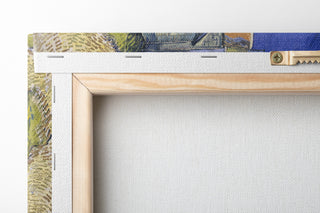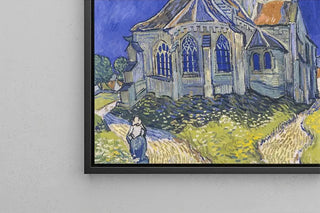Painting Two horsemen and two girls with flowers - Wilhelm von Kobell | Art print


View from behind

Frame (optional)
The lively rural scene in The Two Horsemen and Two Girls with Flowers, painted by Wilhelm von Kobell
This composition depicts a bucolic encounter in motion, where two horsemen cross paths with two young girls carrying bouquets, captured with a soft and harmonious palette. Earthy ochres contrast with luminous touches on fabrics and flowers, while a precise treatment of the sky and foliage creates atmospheric depth. The technique combines finesse in drawing with pictorial freedom in light impasto, giving the painting a vibration that is both realistic and poetic. The gazes, the posture of the horses, and the play of light convey a tranquil emotion, inviting contemplation.
Wilhelm von Kobell, master of landscape and genre scene at the turn of the 19th century
Originally from Germany, Wilhelm von Kobell (1766–1853) established himself as a major painter of landscapes, genre scenes, and military compositions, with training influenced by Dutch tradition and early Romantic naturalist approaches. Active in Bavaria, he worked on public and private commissions, developing a technique attentive to topographical details and light effects. His works demonstrate a keen sense of visual storytelling and technical mastery that influenced 19th-century German landscape painting, making each piece a valuable artistic and historical document.
A decorative acquisition with multiple advantages
Opting for the art print of The Two Horsemen and Two Girls with Flowers adds a touch of classic elegance to any interior, whether a living room, office, or bedroom. Faithful to the original, this art print highlights the delicacy of the colors and the relief of the brushstrokes, making it ideal under glass or framed in a traditional style. Available framed or in a large panoramic format, The Two Horsemen and Two Girls with Flowers fits seamlessly into both contemporary and traditional decor. For a more textured presence, choose the canvas version on stretcher bars, which captures the warmth and authenticity of the original while facilitating hanging and decorative staging.

Matte finish

View from behind

Frame (optional)
The lively rural scene in The Two Horsemen and Two Girls with Flowers, painted by Wilhelm von Kobell
This composition depicts a bucolic encounter in motion, where two horsemen cross paths with two young girls carrying bouquets, captured with a soft and harmonious palette. Earthy ochres contrast with luminous touches on fabrics and flowers, while a precise treatment of the sky and foliage creates atmospheric depth. The technique combines finesse in drawing with pictorial freedom in light impasto, giving the painting a vibration that is both realistic and poetic. The gazes, the posture of the horses, and the play of light convey a tranquil emotion, inviting contemplation.
Wilhelm von Kobell, master of landscape and genre scene at the turn of the 19th century
Originally from Germany, Wilhelm von Kobell (1766–1853) established himself as a major painter of landscapes, genre scenes, and military compositions, with training influenced by Dutch tradition and early Romantic naturalist approaches. Active in Bavaria, he worked on public and private commissions, developing a technique attentive to topographical details and light effects. His works demonstrate a keen sense of visual storytelling and technical mastery that influenced 19th-century German landscape painting, making each piece a valuable artistic and historical document.
A decorative acquisition with multiple advantages
Opting for the art print of The Two Horsemen and Two Girls with Flowers adds a touch of classic elegance to any interior, whether a living room, office, or bedroom. Faithful to the original, this art print highlights the delicacy of the colors and the relief of the brushstrokes, making it ideal under glass or framed in a traditional style. Available framed or in a large panoramic format, The Two Horsemen and Two Girls with Flowers fits seamlessly into both contemporary and traditional decor. For a more textured presence, choose the canvas version on stretcher bars, which captures the warmth and authenticity of the original while facilitating hanging and decorative staging.






